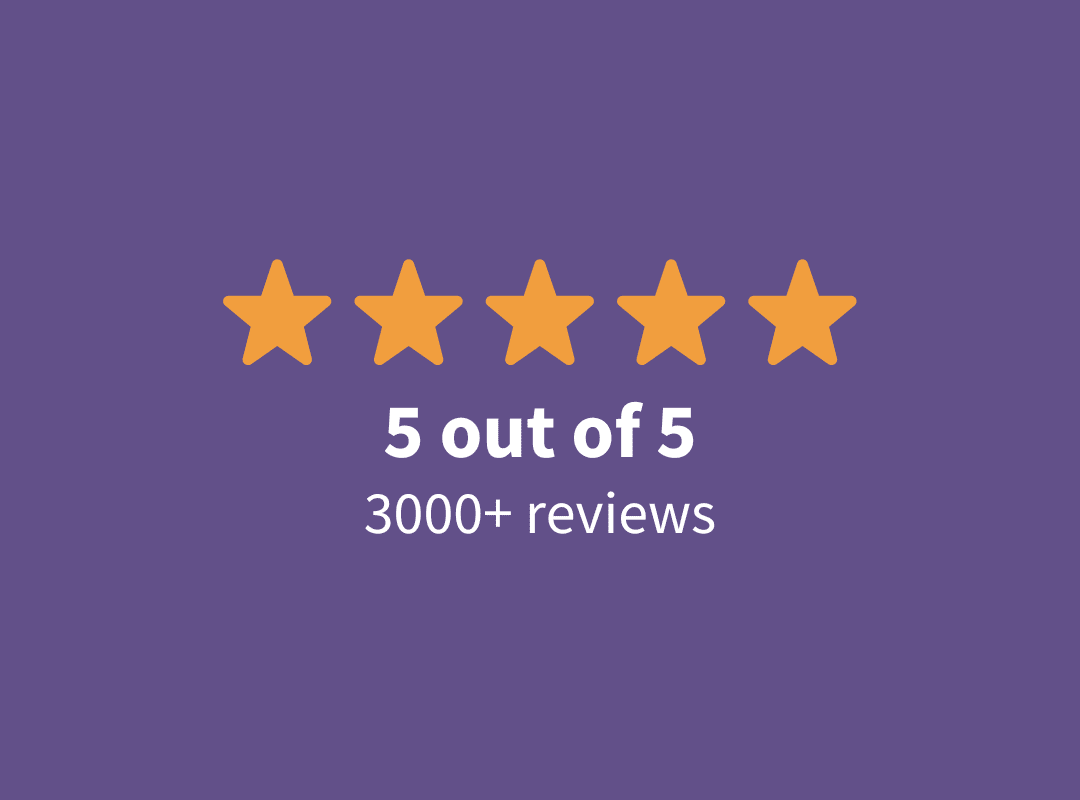
According to the Association of American Medical Colleges (AAMC), the median state-resident cost for a four-year medical degree at a public college is $152,476. And if you attend a private medical school, you’ll pay even more, with a median cost of $246,132.
But you mfay be able to reduce the actual cost of your medical school training with medical school scholarships. No matter which field of medicine you plan to practice, there’s a good chance that there are many scholarships you could qualify for.
In this guide, we’ll take a look at where to look for med school scholarships and how to apply before highlighting some of the best medical school scholarships available today.
Related: Average Medical School Debt: How Much It Really Costs to Be a Doctor
Where to find medical school scholarships
Even if there are some med school scholarships that would be a perfect fit for your situation, it doesn’t do you any good if you don't know where to look for them. Here are a few places to begin searching for med school scholarships.
1. Start local with city and state scholarships
Before you even begin using some of the online tools that we’ll talk about later, check to see if there are any medical school scholarships available in your local area. Local scholarships may be easier to land since the competition should be more limited.
City scholarships
Here are some of the places in your area that may offer medical school scholarships:
- Local hospitals
- Churches and other religious organizations
- Businesses
- Endowments
- Clubs
- Nonprofit organizations
You may have several med school scholarships sitting in your backyard, so to speak. You just need to get out and hunt for them.
State scholarships and grants
Many states have scholarships and grants exclusively reserved for state residents.
To qualify for most state-run scholarship programs, you’ll need to file your Free Application for Federal Student Aid (FAFSA). You should be doing this anyway because you’ll need your FAFSA in order to qualify for any federal grants, too. Plus, your FAFSA is required to receive federal student loans, if you end up needing them.
Finding city and state-specific scholarships
How do you find scholarships that these places may offer? Ask influential people in your town for help.
- If you’re still in high school or pursuing your undergrad, ask one of your school counselors if they know of any med school scholarships for area and state residents.
- Sit down with someone from the human resources department at your local hospital.
- If you’re friends with a prominent business person in your area, grab coffee with them and ask if they know of any opportunities.
The bottom line? Leverage your existing network first. Try to land scholarships with people who know your name and face before branching out to national ones that may be harder to nab.
2. Look for school-specific scholarships
If you’re already in medical school, it’s worth your time to pay a visit to your financial aid counselor’s office. They may know of scholarships that only students at your particular school are eligible for.
Also, you shouldn’t necessarily let the cost of a prestigious school — like Harvard, New York University or John Hopkins — keep you from enrolling.
Not only could graduating from a prestigious school have a big positive effect on your medical career, but these schools can provide more scholarships as well. The wealthier the school, the more funding is available for scholarships.
3. Search online
There are several websites that can help you search for med school scholarships. Here are a few of the most popular ones:
- BigFuture (The College Board)
- CareerOneStop (The Department of Labor)
- Scholarships.com
- Fastweb
- Niche
- BrokeScholar
- Chegg
Be careful, though. There are lots of illegitimate scholarship sites out there as well. For one, if a site says that it can “guarantee” you a med school scholarship (for a small, upfront fee, of course), run the other way. You’re probably looking at a scam site.
To get the most out of scholarship sites, make sure to fill out your profile as completely as possible. That helps the sites match you with scholarships that you have the best chances of landing.
Finally, focus on scholarships, not “sweepstakes.” True scholarships are almost always going to require some legwork and will usually include an essay component.
That’s OK. That just means that you’ve found a legitimate scholarship opportunity that will have real people reviewing the applications. That’s good because if you knock your essay out of the park, you’ll have a real shot of winning the scholarship.
The 6 best medical school scholarships
Here are a few fantastic med school scholarships that could make your Doctor of Medicine (M.D.) degree more affordable.
1. NHSC Scholarships
The National Health Service Corps Scholarship Program (NHSC SP) is one of the most comprehensive that you’ll find.
If you apply and are accepted to this program, you could get all of your tuition and fees covered for your entire four years of medical school. And any payments you receive from this program that go toward tuition and fees aren’t subject to federal tax.
Additionally, the NHSC Scholarship Program also gives med students a stipend to help with living expenses. It’s important to note that the living stipend is subject to federal tax.
Employment requirements
“What’s the catch?” is probably what you’re asking yourself right now. If you’re thinking the NHSC is going to be expecting something in return for a scholarship so generous, you’re right.
You must commit to serve in a primary care profession in a Health Professional Shortage Area (HPSA) for a certain period of time. Eligible medical disciplines include:
- Physicians
- Dentists
- Nurse Practitioners
- Nurse Midwives
- Physician Assistants
Here’s how many years you’ll be required to service in a HPSA zone depending on how many years of scholarship support you received.
| Full or partial years of scholarship support | Years of service obligation |
|---|---|
| 1 School Year (2019-2020) | 2 Years Full Time; 4 Years Half Time |
| 2 School Years (2019-2021) | 2 Years Full Time; 4 Years Half Time |
| 3 School Years (2019-2022) | 3 Years Full Time; 6 Years Half Time |
| 4 School Years (2019-2023) | 4 Years Full Time; 8 Years Half Time |
That may seem like a lot of years to commit, especially after already spending eight years in med school and another three to seven years in residency. But for you, it may be worth having your med school completely paid for.
How awards are determined
You need to know that the NHSC SP is a highly competitive program. The NHSC says priority is given to students who:
- Perform well academically
- Are from a disadvantaged background
- Are likely to continue to serve in a high-need area once their NHSC service commitment is complete
The NSHC says additional factors, like essays and letters of recommendation, are taken into consideration as well.
2. Physicians of Tomorrow Scholarship
The Physicians of Tomorrow Awards, sponsored by the American Medical Association (AMA), provides $10,000 scholarships to medical students entering their final year of school.
To qualify for this scholarship, you’ll need to be nominated by your medical school dean or dean’s designate. There are actually 10 different scholarships that fall under the Physicians of Tomorrow umbrella, but you can only be nominated for one category.
If you’re interested in being nominated for this med school scholarship, contact your school staff and make sure they’re aware of the program.
3. Herbert W. Nickens Medical Student Scholarships
The Herbert W. Nickens Medical Student Scholarships, sponsored by the AAMC, provides $5,000 scholarships to med students entering their third year of school.
Once again, you’ll need to be nominated by your college to receive this med school scholarship. Your dean or dean’s designate will need to send a nomination letter stating verbatim that you’ve maintained good academic standing throughout your first two years.
The dean’s letter should also mention:
- Demonstration of leadership efforts in addressing the educational, societal and health-care needs of racial and ethnic minorities
- Awards and honors that show commitment to eliminating inequities
- Special research projects, and/or extracurricular activities that demonstrate leadership abilities
- Any outstanding achievement while in medical school
In addition to a letter from the dean’s office, the Herbert W. Nickens Medical Student Scholarships also require:
- A letter of recommendation from the medical school's institutional Group on Student Affairs (GSA) diversity affairs officer
- A letter of recommendation from a faculty member
- A personal statement from you assessing your leadership efforts in eliminating inequities in medical education and health care for racial and ethnic minorities
- A curriculum vitae (CV) highlighting any additional awards and scholarships you’ve received.
So, yes — this one’s going to take some work.
But the fact that this program has such stringent requirements may also weed out some of the competition.
4. The Tylenol Future Care Scholarship
Each year, the Tylenol Future Care Scholarship awards 10 scholarships worth $10,000 and 25 scholarships worth $5,000.
In order to qualify for one of these scholarships, you’ll need to be currently enrolled in a graduate program in medical school, nursing and/or pharmacy or be in the final year of your undergrad and preparing to enroll in the fall.
Applications will be evaluated based on several factors, including:
- College GPA
- Academic records in medical school, nursing and/or pharmacy
- Community involvement and volunteer service
- Essay content
Also, the med school that you plan to attend must be an accredited, nonprofit two- or four-year college or university in the United States.
5. Diverse Medical Scholars Program
Sponsored by the United Health Foundation (UHF), which partnered with National Medical Fellowships (NMF), the Diverse Medical Scholars Program gives $7,000 to 32 medical students each year. It’s meant to encourage quality health-care professionals to work in underserved areas.
To qualify, you’ll need to complete a 200-hour community service project at a community site of your choice.
You’ll also need to identify with one of the following minority groups: African American, Latino, Native American or Asian Americans (Vietnamese and Cambodian only).
Check out the scholarship program’s details page to learn more about program requirements.
6. Health Professions Scholarship Program (HPSP)
If you’re willing to spend time serving in the U.S. Army, Navy or Air Force, you may be able to get your entire med school tuition paid for through the Health Professions Scholarship Program (HPSP).
In addition to paying for your tuition, this program covers your health insurance and other school-related expenses. It also provides a stipend for living expenses.
The links below give more information about how each specific branch incorporates the program.
In exchange for having your med school paid for, you’ll need to serve for a certain number of years in the branch of service that you received the scholarship from. For example, the Air Force says you’ll need to work one year for each year of scholarship, with a minimum of three years.
For details about the minimum service requirements in the other branches, use the contact links on the appropriate site or ask your recruiting officer.

Are International students eligible for these scholarships? If not, do you have an article on resources that could help one secure scholarships for Med School as an international student?
Scholarship guidelines vary so it’s best to research each one to find out if you qualify. We don’t currently have a list of international scholarships.